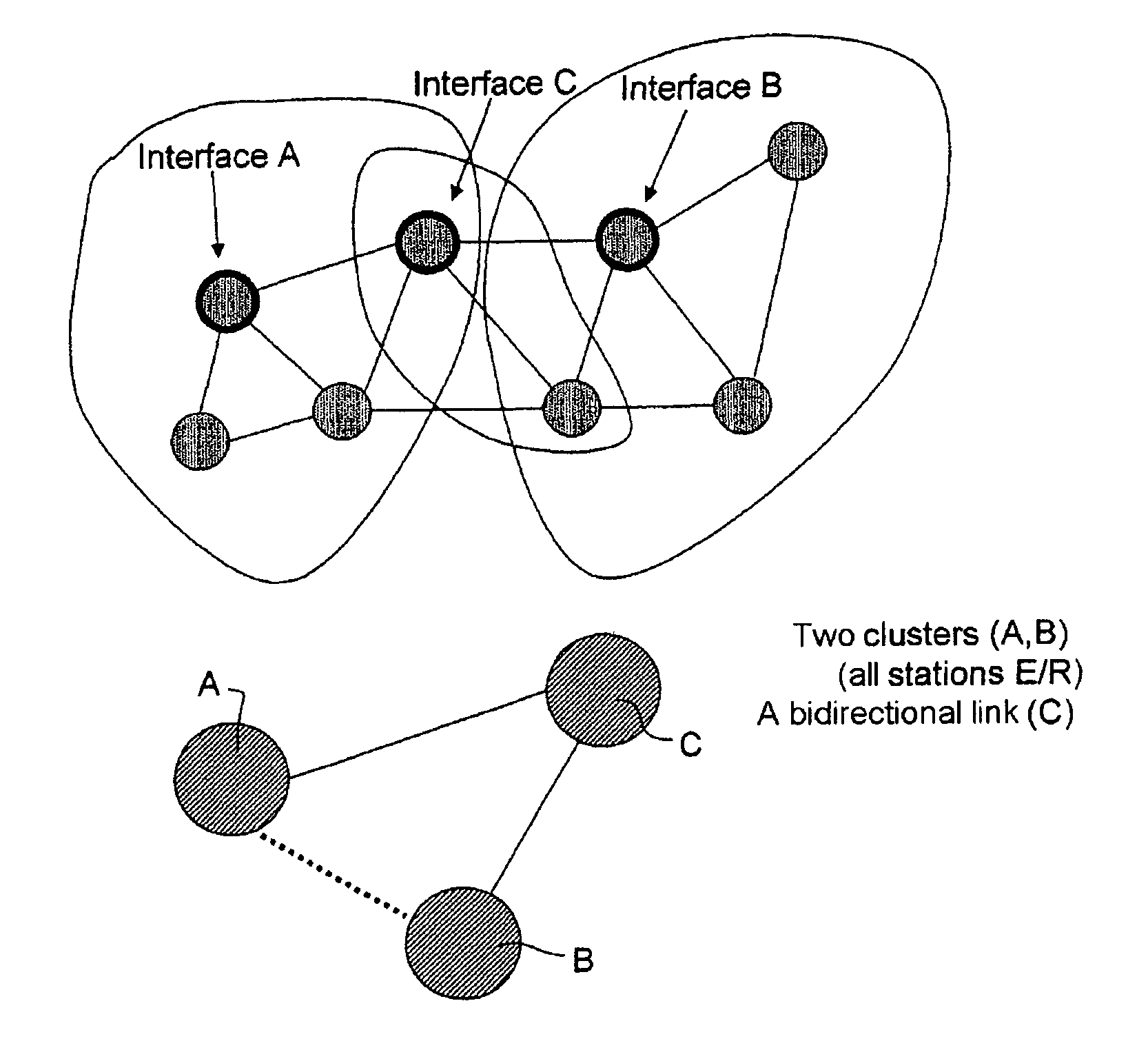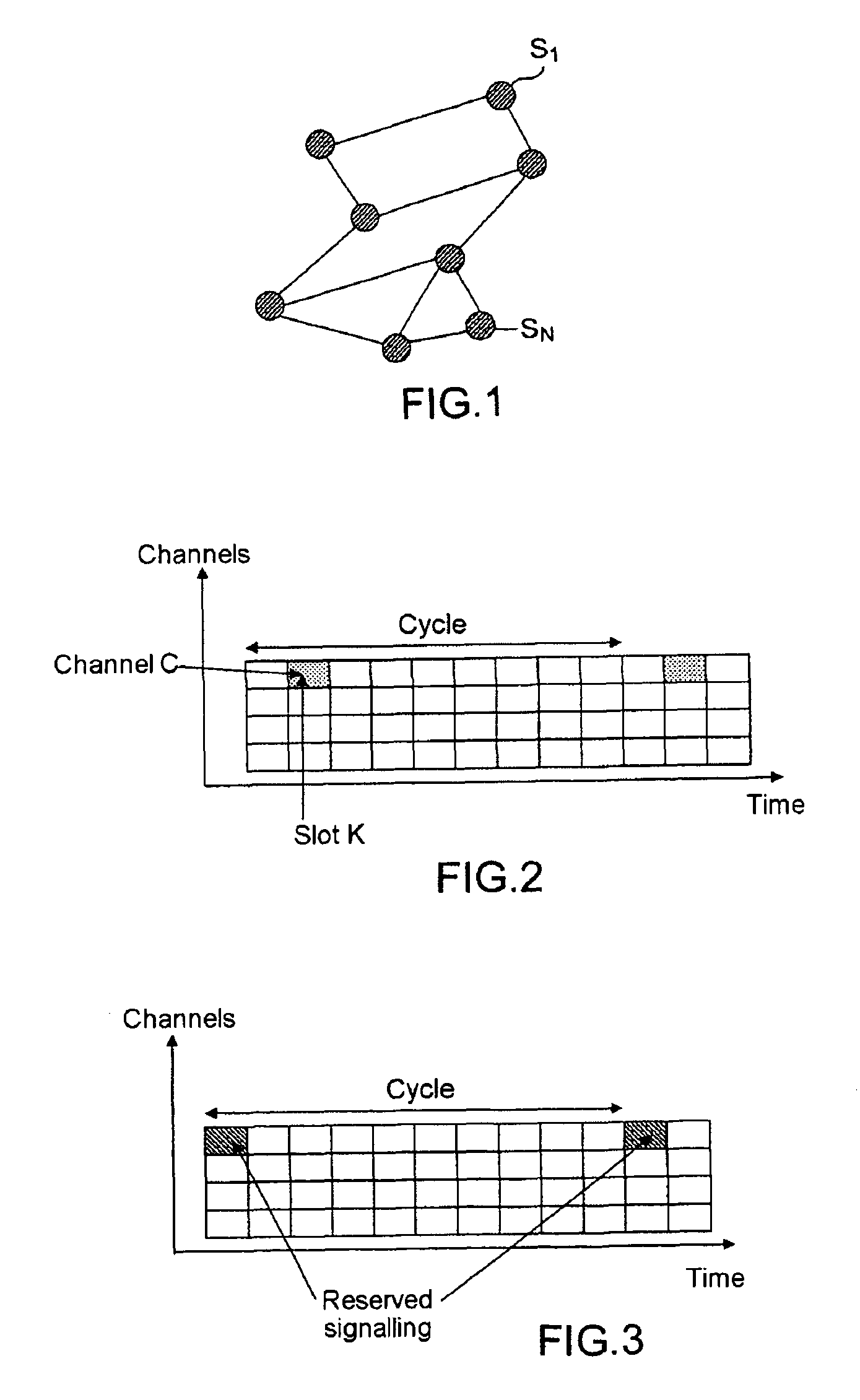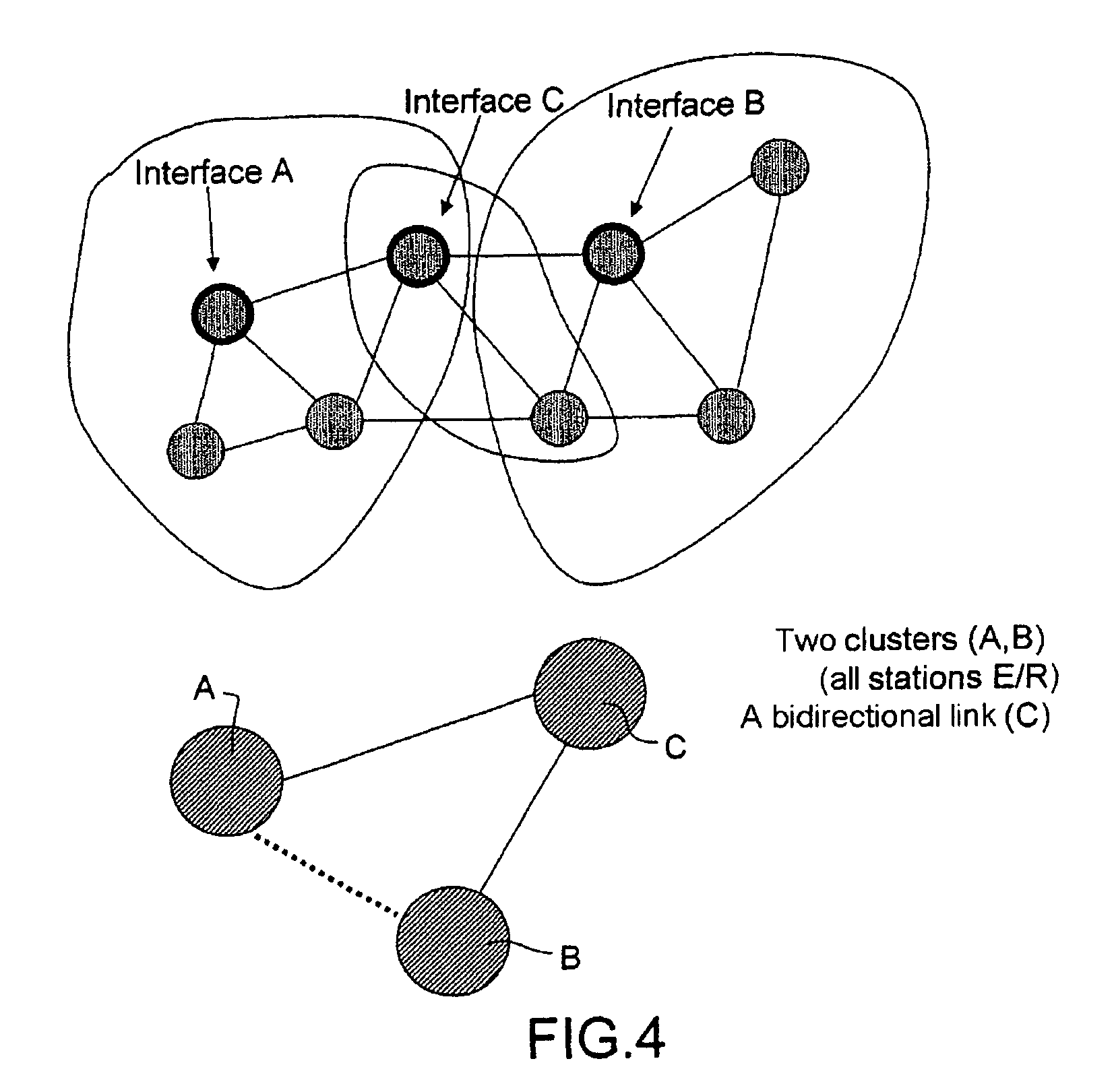Method for dynamically allocating resources in a network of station clusters
a technology of station clusters and resources, applied in network traffic/resource management, network topologies, wireless commuication services, etc., can solve problems such as difficulty, solution limits, and inability to provide stations with deterministic knowledge of slots, and achieve greater reactivity
- Summary
- Abstract
- Description
- Claims
- Application Information
AI Technical Summary
Benefits of technology
Problems solved by technology
Method used
Image
Examples
Embodiment Construction
[0051]The method according to the invention notably has the function of allocating time-frequency resources between several stations of a mobile, multi-hop ad hoc network in a decentralized manner by proposing a method to settle the previously mentioned conflicts in a distributed manner. “Distributed” is understood to be the fact that in normal operation there is no predefined station responsible for this allocation and that the allocation and the settlement of conflicts must be done locally. Moreover, the resources of the systems considered are limited and it is probable that in the case of network load many contradictory allocation requests are to be arbitrated.
[0052]The solution proposed enables the allocation of time-frequency resources to the stations Si of a mobile ad hoc network such as illustrated in FIG. 1.
[0053]The time is, for example, assumed to be divided into intervals, and assumes a synchronization of the network by any method of the GPS (Global Positioning System) ty...
PUM
 Login to View More
Login to View More Abstract
Description
Claims
Application Information
 Login to View More
Login to View More - R&D
- Intellectual Property
- Life Sciences
- Materials
- Tech Scout
- Unparalleled Data Quality
- Higher Quality Content
- 60% Fewer Hallucinations
Browse by: Latest US Patents, China's latest patents, Technical Efficacy Thesaurus, Application Domain, Technology Topic, Popular Technical Reports.
© 2025 PatSnap. All rights reserved.Legal|Privacy policy|Modern Slavery Act Transparency Statement|Sitemap|About US| Contact US: help@patsnap.com



